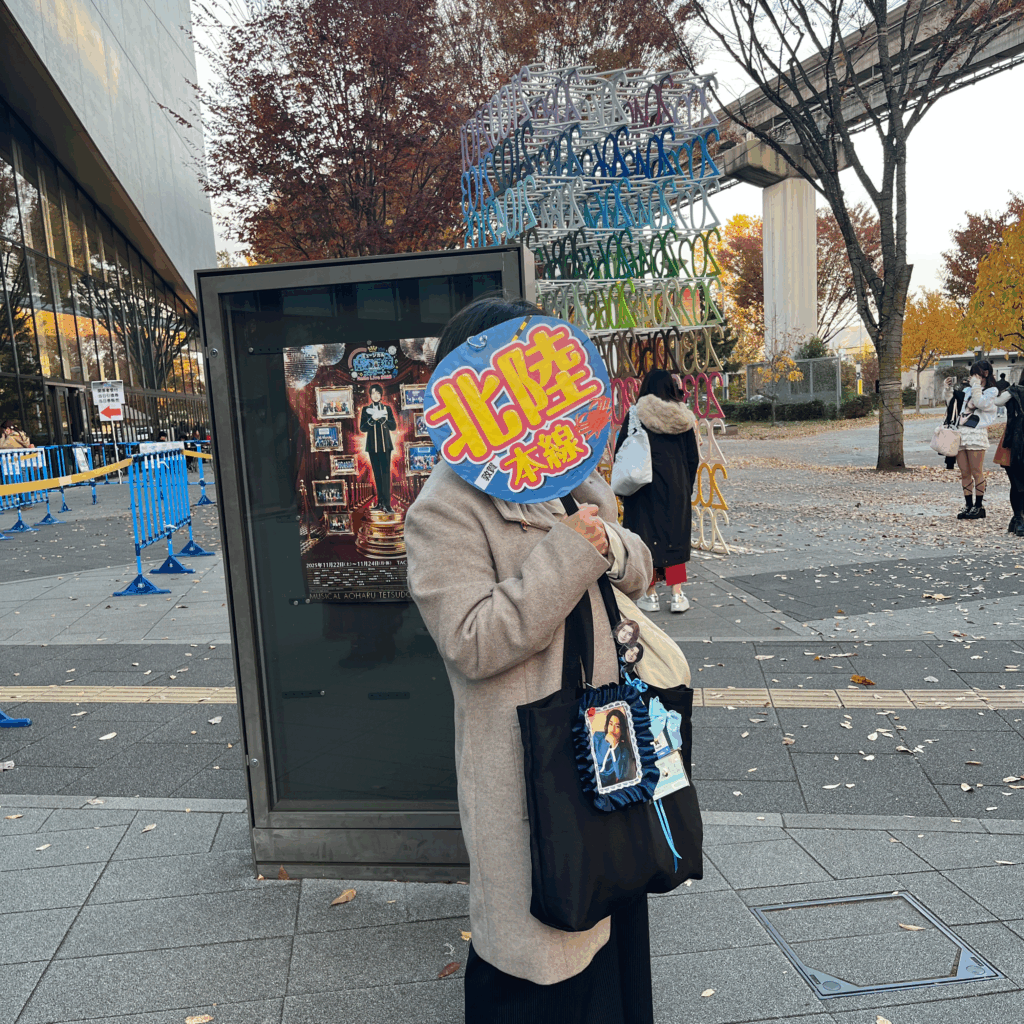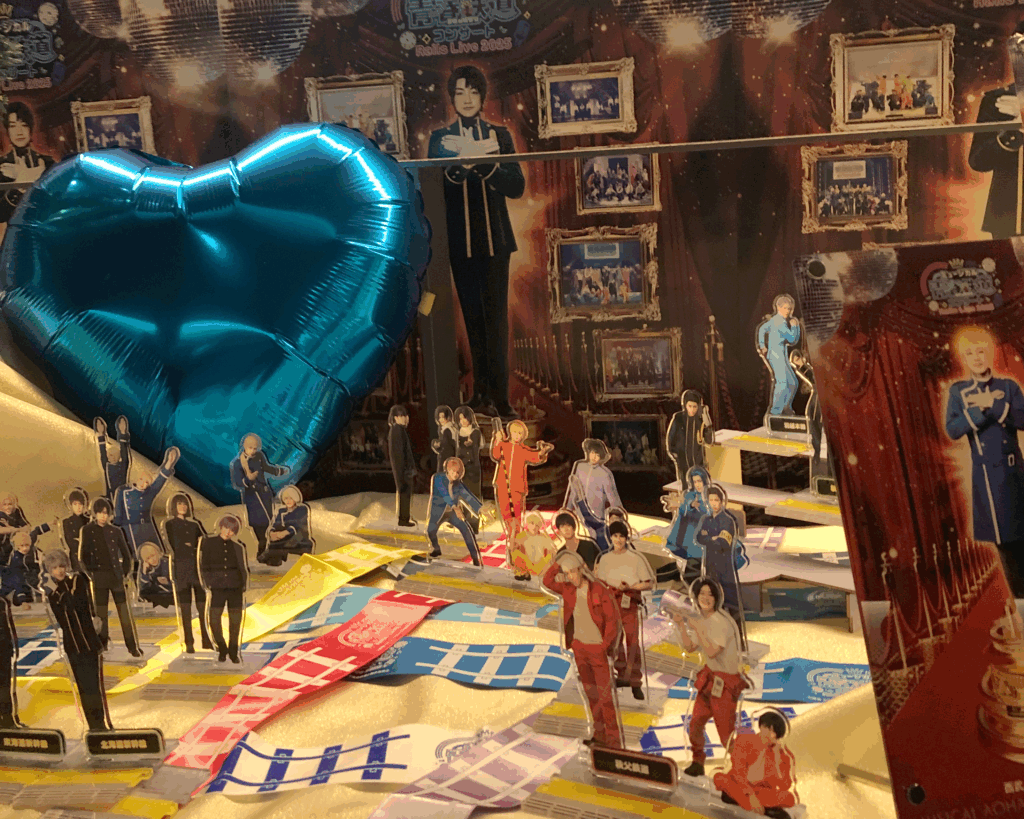How Oshi Color Culture Inspires Japanese Color Design
Japanese trains have become more than transportation — their colors shape the way fans express love and identity. At the Aoharu Tetsudo 10th Anniversary Live, I saw how oshi colors come alive through fashion and creativity.
Overview of the Aoharu Tetsudo 10th Anniversary Live
This week, I attended the Aoharu Tetsudo 10th Anniversary Live in Tokyo — a special celebration of the long-running series that personifies Japanese railway lines as characters. Compared to the usual theatrical productions, this anniversary live had a higher level of entertainment energy, bright stage visuals, and a lively atmosphere that filled the venue.
As a designer who works with color-focused crafts such as kumihimo cords, textile patterns, and color-based product development, this live show became an unexpected but valuable source of creative inspiration.
The Power of Oshi Color Culture in Japanese Fandom
What stood out more than anything was the overwhelming presence of oshi colors — the signature colors associated with each railway line.
Fans expressed their devotion to their favorite line in a wide variety of ways:

Fans express their oshi colors in many ways — from full outfits to subtle accessories.
How Fans Express Their Oshi Colors
• Full head-to-toe outfits in their oshi’s color
• Hair accessories as the main point of color
• Bag charms and small items for subtle expression
• Event-level coordination with customized pieces
There was no single “right” way to participate.
Everyone expressed their oshi color at their own level of comfort, creating a colorful mosaic across the entire venue. It was visually striking — the audience itself became part of the live performance.
This diversity in expression is directly relevant to product design, as it shows that fans need multiple intensity levels of color options: subtle, accent, and full-impact.

JR Railway Line Colors: Why Fans Instantly Recognize Them
Japanese railway colors are incredibly iconic. Even without logos or text, people instantly recognize which line a color represents.
JR Line Color Palette
Official JR East/West conventional line colors commonly used in signage, maps, and oshi-color culture.
Fans incorporated these colors directly into their fashion.
A single orange bag charm clearly signaled a Chūō Line supporter, while yellow-green hair accessories pointed to a Yamanote Line fan.
This strong color identity plays an important role in Japanese fandom culture.
4. Shinkansen Color Palettes and Their Cultural Identity
Shinkansen lines also have extremely distinctive and memorable color palettes. These added an even stronger layer of oshi-color expression at the venue:
Shinkansen Color Palette
Color samples inspired by major Shinkansen lines – useful for oshi-color styling and kumihimo color design.
These palettes are deeply rooted in Japanese design identity.
Seeing fans reinterpret these colors in clothing and accessories showed how strongly color can connect culture, memory, and personal meaning.
5. What Designers Can Learn from Oshi-Color Culture
From a design perspective, oshi-color culture reveals important insights:
• Fans want items in their specific color
• They enjoy mixing handmade and store-bought pieces
• They express their devotion at different levels
– subtle daily-use colors
– accent pieces for events
– bold full-body coordination
Different Levels of Color Expression
This means product lines benefit from offering multiple tiers:
• Light “hint” designs
• Accent-focused items
• Full-color, high-impact options
For kumihimo and textile design, this is especially useful because subtle tone variations can create completely different moods for different fans.
6. Color Layering, Lighting, and Stage Visuals
Although this live show featured fewer dance elements than a traditional musical, the lighting and visual layering on stage were striking.
Colors crossed and blended under stage lights, creating momentary gradients that felt almost like woven threads shifting direction.
This inspired me to explore color transitions based on light rather than pigment — a concept that could be applied to braided cords, textile prints, and color-pattern design.
7. Regional Identity and Character Design in Aoharu Tetsudo
Each character in Aoharu Tetsudo expresses the personality and regional traits of their railway line through:
• Costume accents
• Color palette
• Speech style or dialect
• Small props and gestures
This playful approach shows how culture can be expressed in accessible and enjoyable ways — a valuable reference when designing products for international audiences.
8. Creative Takeaways for Japanese Color Design
The Aoharu Tetsudo 10th Anniversary Live offered several design insights:
• Color is identity — not just a decoration
• Railway and Shinkansen palettes have high recognition value
• Oshi culture requires multiple intensity levels of color expression
• Lighting-based color transitions are a source of new ideas
• Regional identity can be communicated through playful visual cues
These lessons connect directly to future kumihimo color series, FPP patterns, and POD apparel designs.
9. Final Thoughts
The Aoharu Tetsudo 10th Anniversary Live was a vivid celebration of color, fandom, and culture.
Watching fans express their favorite railway line through fashion reminded me how deeply color connects people, emotions, and stories.
I’m excited to bring these inspirations into my future work — creating designs that resonate with people’s personal colors and unique identities.
